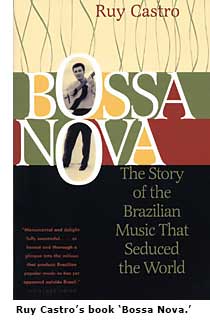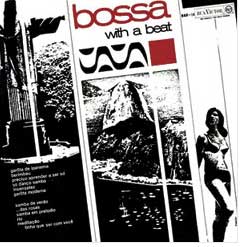Bossa Nova: Music of Modern Love - Page 4
Sinatra was a hard act to follow into bossa, but many other American singers, vocal groups, pianists, songwriters, and even symphony orchestras quickly tried to do so. Bossa nova also found friends among sax players with a breathy approach to their horn, like Getz, and a will to explore different shades of blue. Bossa-themed albums were recorded by reedmen Cannonball Adderley, Coleman Hawkins, Charlie Rouse, Ike Quebec, Bud Shank, and several others.
Years later, in the 1990s, harmonica and guitar veteran Toots Thielemans assembled the two-CD 'Brasil Project,' co-produced by Brazilian bossa emissary Oscar Castro-Neves. "They have so many of those devilishly simple melodies," Thielemans told us of his affection for bossa and samba, "and it's all on good chords that the jazzman likes to play over. And that rhythm—it does something to me, and always has done something to me."
It could be argued that bossa, as a musical form, has sustained more interest in the American jazz world than it has on the stages and airwaves of its home country. However, our interviews with post-bossa Brazilian performers have revealed an ongoing absorption of and respect for the contributions of bossa.
The contemporary Brazilian group Bossacucanova updates the legacy with what member Alex Moreira describes as "modern production methods [sequencers and samplers] with the classic feel of acoustic guitars and great singers." Moreira admits that bossa nova "does not play a lot on the radio [these days], but it's always present in daily life." He also notes that "a current major soap opera features a lot of the classic bossa themes," and that bossa legend Roberto Menescal, who continues to record today, is the father of band mate Marcio Menescal.
A healthy quorum of bossa veterans, including João Gilberto, Oscar Castro-Neves, Hélcio Melito, Sergio Méndes, and Marcos Valle, continue to work in the music business well into middle age, on tour and as expatriates. The United States and other parts of the world, including the Philippines, can boast their own homegrown bossa specialists.

The persistence of bossa nova through time and place came to Jobim's mind metaphorically during the course of our interview.
"Yesterday, I saw the garota herself," he confided, in reference to the original 'girl from Ipanema,' Helô (Pinto) Pinheiro. "She has two beautiful daughters, with the green eyes and the gold skin. New garotas—and I'm getting older, and they're getting younger. But I can still appreciate it—from an official distance—with new glasses and a good cane."
Special thanks for research assistance to Dave Cuzner of modelements.com
Photos: courtesy Michael Ochs Archives, Eli Coory/Fotolia, Achilles Moreaux/Dreamstime, Bossacucanova and Six Degrees Records, Verve Records
• Discover the bossa nova CD essentials found among our sidebar selections and many more hard-to-find musical gems at dustygroove.com
• For a fascinating study of the bossa story, read Ruy Castro's 'Bossa Nova: The Story of the Brazilian Music That Seduced the World' (A Capella Books)
An Infectious Beat, a Three-dimensional High
Bossa nova is timeless—and infectious. That's the way John Isaac, a huge Bay Area fan of original '60s-era bossa as well today's European and Japanese brands of techno-modern bossa, sees it.
Isaac, who lives in what he fondly calls a mid-century 'likeler,' in Fremont, and works as bossa club disk jockey DJ Caasi by night, professes to have a strong affection for mid-century modern homes, classic modern furnishings, and bossa nova—and not necessarily in that order.

"Music and space create and promote a three-dimensional high," Isaac says of the glow that comes over him when his three passions are brought together. "Bossa nova and lounge music truly represent the era of mid-century homes and furnishings—and it's there in the happy-sad feeling you get when listening to [bossa artists like] Astrud Gilberto."
Not far from Isaac, in the hills of Oakland, Dave Cuzner lives and works in a modern-styled two-story loft with vaulted ceilings designed by Ron Kappe, son of the distinguished modernist architect Ray Kappe. Cuzner also has been stricken by bossa nova.
"I appreciate good bossa for the same reason that I like good design," he says. "The attention to quality, the aesthetic honesty, and the timelessness of the piece."
Cuzner, who is co-partner of Mod Elements, an online retailer of rare and unusual mid-century modern books, magazines, and accessories, sees Brazilian music from the 1950s and '60s as a welcome addition to his love for jazz from the same period.




